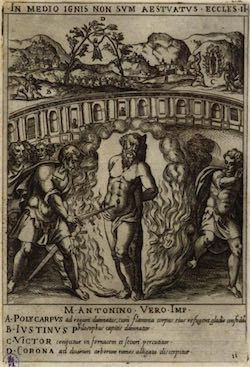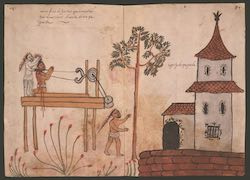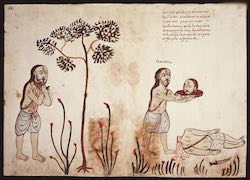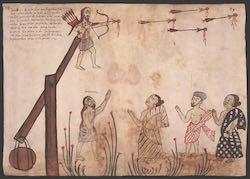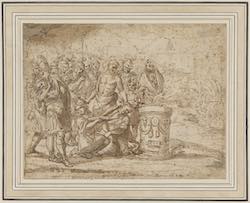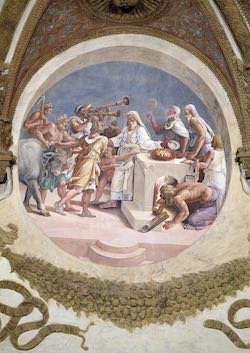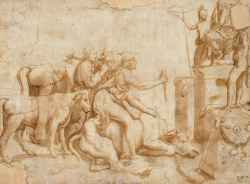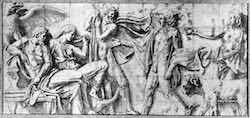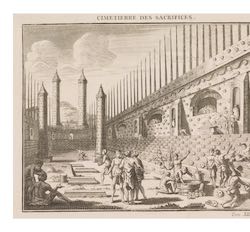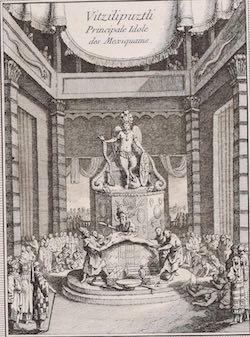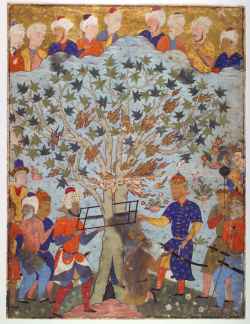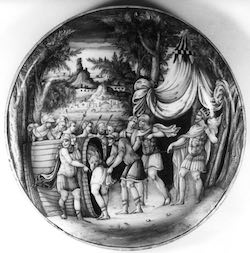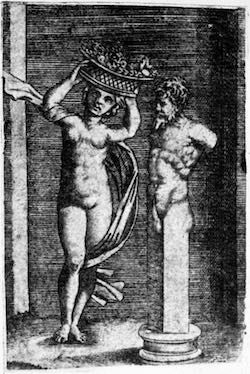Topic: 2. Sacrifice and religion: Comparisons, Antiquarians, Anthropology (16th-18th Century)
Religious sacrifices across various cultures and contexts sparked widespread interest in Early Modern Europe. As Christianity expanded into regions inhabited by "infidels" and "pagans", Europeans encountered a diverse array of sacrificial customs, ranging from the Sati rituals in India to the Aztec sacrifices in the Americas. This cross-cultural exposure captivated a wide audience, including theologians, philosophers, political thinkers, antiquarians, orientalists, missionaries, poets, artists, and even the general public. These encounters broadened the European understanding of sacrifice and led to a critical reassessment of classical and biblical sacrificial rites. This section includes:
- Sources: A selection of early modern printed materials, which include descriptions of the Americas, Asia, and Africa, alongside antiquarian and philological studies on religious sacrifice in classical antiquity and beyond. It also presents early modern works of ethnological observations and the first attempts to compare different sacrificial practices in various traditions and contexts, laying the groundwork for disciplines like the history of religions and anthropology.
- Iconographic Representations: A rich collection of images from the 16th to 18th centuries, illustrating a range of sacrificial rituals and practices as seen in different cultural and geographical contexts.
- Related Bibliography: An extensive bibliography spanning scholarly works from the 19th to 21st centuries, providing contemporary analyses and interpretations of these early studies and observations.
First Christian Martyrs 4 (1585)
from: Cavalieri, Giovanni Battista. Ecclesiae militantis triumphi sive Deo amabilium martyrum gloriosa pro Christi fide certamina ... in ecclesia S. Stephani Rotundi, Romae Nicolai Circiniani pictoris manu visuntur depicta [...], Romae, ex officina Bartholomaei Grassi, 1585, p. 4
First Christian Martyrs 5 (1585)
from: Cavalieri, Giovanni Battista. Ecclesiae militantis triumphi sive Deo amabilium martyrum gloriosa pro Christi fide certamina ... in ecclesia S. Stephani Rotundi, Romae Nicolai Circiniani pictoris manu visuntur depicta [...], Romae, ex officina Bartholomaei Grassi, 1585, p. 5
First Christian Martyrs 6 (1585)
from: Cavalieri, Giovanni Battista. Ecclesiae militantis triumphi sive Deo amabilium martyrum gloriosa pro Christi fide certamina ... in ecclesia S. Stephani Rotundi, Romae Nicolai Circiniani pictoris manu visuntur depicta [...], Romae, ex officina Bartholomaei Grassi, 1585, p. 6
First Christian Martyrs 7 (1585)
from: Cavalieri, Giovanni Battista. Ecclesiae militantis triumphi sive Deo amabilium martyrum gloriosa pro Christi fide certamina ... in ecclesia S. Stephani Rotundi, Romae Nicolai Circiniani pictoris manu visuntur depicta [...], Romae, ex officina Bartholomaei Grassi, 1585, p. 9
First Christian Martyrs 8 (1585)
from: Cavalieri, Giovanni Battista. Ecclesiae militantis triumphi sive Deo amabilium martyrum gloriosa pro Christi fide certamina ... in ecclesia S. Stephani Rotundi, Romae Nicolai Circiniani pictoris manu visuntur depicta [...], Romae, ex officina Bartholomaei Grassi, 1585, p. 11
First Christian Martyrs 9 (1585)
from: Cavalieri, Giovanni Battista. Ecclesiae militantis triumphi sive Deo amabilium martyrum gloriosa pro Christi fide certamina ... in ecclesia S. Stephani Rotundi, Romae Nicolai Circiniani pictoris manu visuntur depicta [...], Romae, ex officina Bartholomaei Grassi, 1585, p. 13
Indian Sacrifice (16th Century)
Biblioteca Casanatense, ms. 1889, c. 80r, Rome
Indian Sacrifice by Behaeding (16th Century)
Biblioteca Casanatense, ms. 1889, c. 86r, Rome
Indian Sacrifice with Harrows (16th Century)
Biblioteca Casanatense, ms. 1889, c. 88r, Rome
Rama accompanied by a golden statue of Sita performs the Ashwamehda Yajna. The sage Valmiki participates. They sit before a ritual Yajna fire. [1790]
from: folio from a dispersed Ramayana series
Sotheby's
Sacrifice of an Ox (1527 - 1528)
Palazzo Te, Camera dei venti, Mantua
Sacrifice to Jupiter [1526 - 1550]
Sotheby's, Ellesmere Sale (5 December 1972), London
Cimetierre des Sacrifices (Cemetery of Sacrifices) (1745)
from: Prévost, Antoine François, Histoire générale des voyages, ou Nouvelle collection de toutes les relations de voyages par mer et par terre qui ont été publiées jusqu'à présent dans les différentes langues, Paris, Didot, 1754, vol. 12, p. after 544
Human Sacrifice to Vitzilipuztli (1745)
from: Prévost, Antoine François, Histoire générale des voyages, ou Nouvelle collection de toutes les relations de voyages par mer et par terre qui ont été publiées jusqu'à présent dans les différentes langues, Paris, Didot, 1754, vol. 12, p. after 544
The story of the prophet Zakariya (a conflation of Zacharias, the father of John the Baptist, and the Old Testament prophet Zachariah), who according to Muslim legend died a martyr's death. Escaping his pursuers by hiding in a tree that miraculously opened to admit him, Zakariya was betrayed by Iblis, the devil, who pointed out the hem of the prophet's cloak protruding from the trunk. The devil's forces sawed the tree apart and with it Zakariya, whose saintly aura is shown as flames bursting among the leaves. (1550-1560)
from: from a dispersed copy of the Falnama (Book of Omens)
Worcester Art Museum
Atilius Regulus Forced in the Barrel [1530 - 1540]
Museo Nazionale di Palazzo Venezia, Rome
Sacrifice to Priapus (16th Century)
Warburg Institute, London, Bartsch Collection (B.XIV.207.258)





